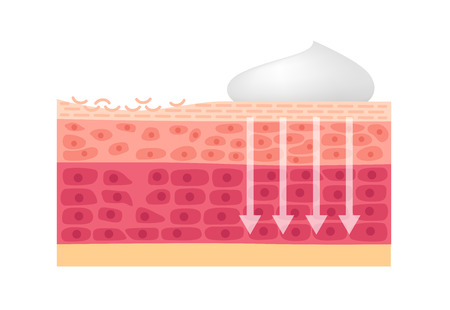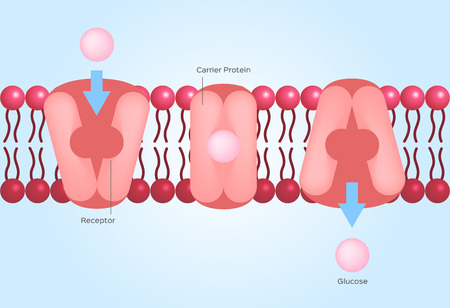Understanding Hyperpigmentation
Hyperpigmentation is a common skin condition that many people in the United States experience at some point in their lives. Simply put, hyperpigmentation refers to areas of the skin that become darker than the surrounding skin due to excess melanin production. Melanin is the pigment responsible for giving our skin, hair, and eyes their color. When your body produces too much melanin in certain spots, you might notice patches, spots, or uneven tone developing on your face or other parts of your body.
There are several types of hyperpigmentation that you might come across. Some of the most common include sunspots (also known as age spots or liver spots), which are caused by prolonged sun exposure; melasma, which often appears as larger brown patches and can be triggered by hormonal changes; and post-inflammatory hyperpigmentation, which results from skin injuries like acne, cuts, or burns. These darkened areas can vary in size and shade, sometimes making people feel self-conscious about their appearance.
Hyperpigmentation can show up differently depending on your skin tone and type. For some, it appears as small freckles or spots, while others may see larger, more widespread discoloration. Understanding what hyperpigmentation looks like and what causes it is the first step toward finding the right solutions for clearer, more even-toned skin.
2. The Role of Hormones in Skin Changes
Hormones play a significant role in the health and appearance of your skin, especially when it comes to hyperpigmentation. Fluctuations in hormone levels—such as those experienced during pregnancy, menopause, or while using birth control—can directly impact how your skin produces melanin, the pigment responsible for skin color. When these hormonal changes occur, many people notice dark patches or uneven skin tone, commonly referred to as “melasma” or “the mask of pregnancy.” Understanding these connections can help you better manage and prevent unwanted pigmentation changes.
How Different Life Stages Affect Skin Pigmentation
| Life Stage/Event | Key Hormones Involved | Common Skin Effects |
|---|---|---|
| Pregnancy | Estrogen, Progesterone | Melasma (dark patches on face), increased sensitivity to sun exposure |
| Menopause | Decreased Estrogen | Dullness, increased age spots, uneven tone |
| Birth Control Use | Synthetic Estrogen & Progesterone | Similar to melasma, possible new or darker patches on the skin |
Why Does This Happen?
The key reason for these changes is that certain hormones stimulate the production of melanin. For example, during pregnancy or when taking hormonal contraceptives, higher levels of estrogen and progesterone can trigger melanocytes (the cells that produce pigment) to become more active. This often leads to noticeable darkening in specific areas like the cheeks, forehead, and upper lip.
Cultural Tip:
In the U.S., it’s common for people experiencing these changes to seek guidance from dermatologists or skincare professionals. Open communication with your healthcare provider can help you find safe ways to manage hormonal hyperpigmentation while respecting your overall health goals.

3. Common Triggers in the American Lifestyle
Hyperpigmentation is a concern for many Americans, and understanding its common triggers can help you take proactive steps to protect your skin. In the U.S., several lifestyle factors stand out as frequent causes. Sun exposure tops the list—spending time outdoors is part of the American way of life, whether its enjoying summer barbecues, hiking, or simply commuting. However, the suns UV rays can trigger excess melanin production, leading to dark spots and uneven skin tone. Even brief unprotected exposure can accumulate over time.
Stress is another major player. The fast-paced American lifestyle often leads to elevated stress levels, which can disrupt hormone balance and potentially worsen hyperpigmentation. When youre stressed, your body produces more cortisol—a hormone that can influence other hormones like estrogen and progesterone, both linked to pigmentation changes.
Diet also plays a role. Popular American eating habits—such as consuming high-sugar foods, processed snacks, and dairy products—may contribute to hormonal fluctuations that affect your skin. Certain dietary choices can also increase inflammation in the body, making existing pigmentation issues more noticeable.
If you live in the U.S., being mindful of these everyday triggers—sun exposure, stress, and diet—can empower you to make small lifestyle adjustments that support healthier skin and help manage hyperpigmentation more effectively.
4. Prevention and Protective Habits
Taking proactive steps is essential when it comes to managing hyperpigmentation influenced by hormonal changes. By adopting skin-protective habits that fit the American lifestyle, you can minimize your risk and promote a healthy, even complexion. Below are some practical, culturally relevant tips to keep in mind.
Sun Safety: Your First Line of Defense
Exposure to ultraviolet (UV) rays is one of the biggest triggers for hyperpigmentation, especially during hormonal fluctuations such as pregnancy or menopause. Incorporating sun safety into your daily routine is non-negotiable:
| Habit | Why It Matters | How to Apply It Daily |
|---|---|---|
| Sunscreen | Protects against UV-induced pigment changes | Use broad-spectrum SPF 30+ every morning, even on cloudy days; reapply every two hours outdoors |
| Protective Clothing | Adds an extra barrier against direct sunlight | Wear hats, sunglasses, and long sleeves when spending extended time outside |
| Seek Shade | Reduces overall UV exposure during peak hours | Avoid being outdoors from 10 a.m. to 4 p.m., or stay under umbrellas and trees during this time |
Culturally Relevant Skincare Tips for Americans
The diversity in American lifestyles means skincare habits should be tailored to fit various routines and environments:
- Morning Routine: Cleanse with a gentle face wash, apply antioxidant serum (like vitamin C), then sunscreen before heading out—even if you’re just commuting or running errands.
- Healthy Diet Choices: Integrate foods rich in antioxidants such as berries, leafy greens, and nuts; these help combat oxidative stress that can worsen pigmentation.
- Stay Hydrated: Carry a water bottle throughout the day—a common American practice—to keep skin hydrated from within.
- Avoid Tanning Beds: While tanning may seem popular, it significantly increases pigmentation risks. Opt for self-tanning lotions if you desire a bronzed look.
- Consistent Sleep Schedule: Hormonal imbalances can be worsened by irregular sleep. Prioritize 7-9 hours of rest each night for better skin health.
Building Lasting Healthy Habits
Consistency is key. Many Americans find success by setting reminders on their smartphones for sunscreen application or partnering with friends and family for outdoor activities that prioritize shade and protection. Consider incorporating sun safety education into family routines—especially important for children and teens who spend lots of time outdoors.
Your Action Plan at a Glance:
- Create a “sun care kit” with sunscreen, hat, and sunglasses in your car or bag.
- Set digital reminders to reapply sunscreen midday.
- Discuss hyperpigmentation prevention during annual check-ups with your healthcare provider.
- Encourage workplace or school initiatives promoting skin health awareness.
If you start small—like making sunscreen part of your morning ritual—you’ll build lasting habits that protect your skin for years to come.
5. Treatment Options and When to See a Dermatologist
If you’re dealing with hyperpigmentation related to hormonal changes, you’re not alone—and thankfully, there are several effective options for managing these skin concerns. Understanding the difference between over-the-counter remedies and professional treatments can help you decide what’s best for your needs.
Over-the-Counter Solutions
Many people start with over-the-counter (OTC) products, which can be found at most drugstores or online. Ingredients like vitamin C, niacinamide, and licorice root extract are popular for brightening dark spots and evening out skin tone. Products containing retinoids or alpha hydroxy acids (AHAs), such as glycolic acid, may also help by gently exfoliating the skin and encouraging cell turnover. Remember to use sunscreen daily—UV exposure can worsen hyperpigmentation, especially when your hormones are fluctuating.
Professional Treatments
If OTC products aren’t delivering the results you want, it might be time to consider professional treatments. Dermatologists offer prescription-strength topical creams with ingredients like hydroquinone or tretinoin, which can significantly lighten stubborn pigmentation. In-office procedures—such as chemical peels, laser therapy, or microdermabrasion—can also target deeper pigmentation issues more effectively than at-home methods.
When Should You See a Dermatologist?
If your hyperpigmentation is severe, rapidly worsening, or affecting your confidence, don’t hesitate to consult a board-certified dermatologist. It’s especially important to seek expert help if you notice other symptoms like itching, pain, or changes in the size or color of pigmented areas. A dermatologist can diagnose the underlying cause of your discoloration, customize a treatment plan tailored to your skin type and hormonal background, and help you avoid unnecessary side effects.
Your Next Steps
Managing hormone-related hyperpigmentation often requires patience and the right combination of treatments. Don’t get discouraged—by exploring both OTC options and professional care, you’ll be empowered to make informed decisions about your skin health. If you’re unsure where to start or feel overwhelmed by choices, reaching out to a skincare expert is always a smart move.
6. Embracing Skin Confidence
In the journey of understanding hyperpigmentation and hormonal changes, it’s important to remember that true skin health goes beyond any single spot or imperfection. Many Americans experience shifts in their skin due to hormonal changes, whether during adolescence, pregnancy, menopause, or times of stress. Rather than striving for flawless skin, embracing a positive self-image can make a meaningful difference in daily life.
Focusing on Holistic Skin Health
Holistic skin health means considering your well-being as a whole—mind, body, and spirit. Simple habits like balanced nutrition, regular exercise, stress management, and consistent skincare routines can help support your skin from within. It’s not about covering up or erasing every mark; it’s about caring for yourself with kindness and intention.
The Power of Community and Support
In American culture, conversations around beauty standards are evolving. There is growing recognition that every person’s skin tells a unique story. Sharing experiences with friends, family, or support groups can foster resilience and remind you that you’re not alone in your skin journey. Seeking advice from trusted dermatologists or skincare professionals can also empower you to make choices that honor both your physical and emotional health.
Celebrating Your Individuality
Your skin is part of what makes you uniquely you. While managing hyperpigmentation and hormonal changes may have its challenges, choosing confidence and self-acceptance can be incredibly powerful. By prioritizing holistic wellness and supporting one another, we can build a community where everyone feels seen, valued, and beautiful—just as they are.

